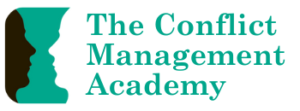Farsighted: How we make the decisions that matter the most, by Steve Johnson
This book is a brilliant exploration about decision making. I love it on so many levels: it provides some very practical tools and strategies for making complex decisions; it discusses the importance of both science and story (including the benefits of reading literary fiction) in building our capacity to make good decisions; and it includes examples ranging from Middlemarch to the capture of Osama Bin Laden.
Johnson describes eight factors that contribute to the challenge of complex decisions:
1. Involve multiple variables.
2. Require full-spectrum analysis (different variable, different frames of reference, multi-disciplinary)
3. Force us to predict the future.
4. Involve varied levels of uncertainty.
5. Often involve conflicting objectives.
6. Harbour undiscovered options.
7. Prone to System 1 failings.
8. Vulnerable to failures of collective intelligence.
He then suggests three main steps to try to work through those challenges, each with some very practical tools and strategies.
These include:
• Build an accurate, full-spectrum map of all the variables and potential paths available to us (divergence and diversity are key, get outside of our intuitive sense of the situation in front of us, let go of “anchors”, use impact pathways or “charrettes” to derive the most useful information from multiple sources of evidence, ensure independence to avoid focus on shared information, recognise what we don’t know or understand, challenge assumptions, seek out contradictory evidence, deliberately reduce your options to force you to consider those you may be ignoring);
• Make predictions about where all those potential paths might lead us, given the variables at play (simulations, gameplay, scenario planning, examine alternative narratives that undermine your assumptions, imagine outcomes including failure and reverse engineer by explaining why each happened, experiment with different identities/roles.
• Reach a decision by weighing the various outcomes against our overarching objectives (importance of values, pros and cons but also bad events table, cone of uncertainty, flexibility of decision paths, mulling, and use storytelling to describe and help us explore the true complexity of lived experience).
There is so much in this book, and so many tools we could use with our conflict clients to help them explore their choices and make decisions.

